Tuesday, January 21, 2025. Annette’s News Roundup.
Look forward but take a moment to look back.
The Biden-Harris Administration Record | The White House
The work that we have done over the past four years has made a profound difference in the lives of so many — people we may never meet, but who benefited because of our work.
— Vice President Kamala Harris (@VP) January 19, 2025
Join me and take a look back at nine moments from the Biden-Harris Administration. pic.twitter.com/xqczccsHuh
This is sure a look back - the New Yorker cover that never happened.

The portrait above, “Kamala,” painted by Kadir Nelson, would have been the cover of the November 18, 2024, issue of The New Yorker—that is, if Kamala Harris had won the election on November 5th. Instead, late that evening, when it became clear that the vote was going the other way, it was swapped out for a silhouette of soon-to-be President Donald Trump, drawn quickly by Barry Blitt (who is also the artist behind the January 20, 2025, cover about the Inauguration).
This is not the first would-be Madame President cover in the magazine’s history; the first was, of course, in 2016, when a cover of Hillary Clinton was replaced by a cover of a wall. Though this image of Vice-President Harris never made it onto newsstands, the original painting will be on view at an exhibition of New Yorker covers at L’Alliance New York, which opens on January 21st and runs through March 30th.
The City Hall in Tel Aviv.

Would someone please tell me what the remarks and behaviors below mean?
Trump on Elon Musk: "He knows those computers better than anybody. All those computers. Those vote-counting computers. And we ended up winning Pennsylvania like in a landslide." pic.twitter.com/MJdfUVhFsT
— Aaron Rupar (@atrupar) January 19, 2025
Trump on the Olympics and World Cup: It’s only because they rigged the election that I’ll be your president representing you there pic.twitter.com/UYcNkp4itX
— Acyn (@Acyn) January 19, 2025
Elon Musk appears to make back-to-back fascist salutes at inauguration rally.
Tech billionaire wades into controversy after shooting right arm on upwards diagonal during celebrations of Trump
Elon Musk waded into controversy on Monday when he gave back-to-back fascist-style salutes during celebrations of the presidential inauguration of Donald Trump.
“I just want to say thank you for making it happen,” the owner of SpaceX, Twitter/X and Tesla, the richest person on earth and a major Trump donor and adviser, told Trump supporters at the Capital One Arena in Washington DC.
Musk then slapped his right hand into his chest, fingers splayed, before shooting out his right arm on an upwards diagonal, fingers together and palm facing down.
The Anti-Defamation League (ADL), which campaigns against antisemitism, defines the Nazi salute as “raising an outstretched right arm with the palm down”.
As the crowd roared, Musk turned and saluted again, his arm and hand slightly lower.
“My heart goes out to you,” Musk said, striking himself on the chest again. “It is thanks to you that the future of civilization is assured. Thanks to you. We’re gonna have safe cities, finally safe cities. Secure borders, sensible spending. Basic stuff. And we’re gonna take ‘Doge’ to Mars.”
That was a reference to the so-called Department of Government Efficiency, the federal cost-cutting effort to which Musk was appointed by the president, and remarks in Trump’s inaugural address in which he said the US would send astronauts to Mars.
Musk asked his audience to imagine American astronauts planting the flag on another planet, miming such actions and shouting: “Bam! Bam!”
He was speaking in advance of Trump’s scheduled appearance at the arena, for inaugural parade events moved indoors due to cold weather. Trump was expected to sign executive orders onstage.
Social media users expressed shock at Musk’s gesture. Eric Feigl-Ding, a public health expert who rose to prominence during the Covid-19 pandemic, when Trump was last in office, wrote: “My God … Musk just did the N[a]zi salute live on TV.”
Musk did not immediately comment. On X, he retweeted footage of his remarks that included the second salute.
Haaretz, an Israeli newspaper, described Musk delivering “a Roman salute, a fascist salute most commonly associated with Nazi Germany”.
As described by the ADL, in Germany between 1933 and 1945, the Nazi salute “was often accompanied by chanting or shouting ‘Heil Hitler’ or ‘Sieg Heil.’ Since world war two, neo-Nazis and other white supremacists have continued to use the salute, making it the most common white supremacist hand sign in the world.”
Trump has widely been accused of being a white supremacist and indeed compared to Hitler – not least by JD Vance, now Trump’s vice-president, before the former Marine and author entered Republican politics and changed his tune.
Musk’s engagement with and support for the global far right continues to prove controversial. Last week, he hosted Alice Weidel, leader of Alternative für Deutschland, a far-right German party, for a conversation on X.
Weidel contended that Hitler “wasn’t a conservative, he wasn’t a libertarian, he was a communist, socialist guy, and we are the opposite”.
Musk agreed.
On Monday, some prominent far-right social media users celebrated Musk’s gestures onstage in Washington, however he had meant them.
As first reported by Rolling Stone, Christopher Pohlhaus, the leader of Blood Tribe, a neo-Nazi group, wrote on Telegram: “I don’t care if this was a mistake. I’m going to enjoy the tears over it.” Andrew Torba, the founder of Gab, a far-right social media platform, also wrote: “Incredible things are happening already.” (The Guardian).
Historian of fascism here. It was a Nazi salute and a very belligerent one too. [contains quote post or other embedded content]
— Ruth Ben-Ghiat (@ruthbenghiat.bsky.social) 2025-01-20T22:16:33.154Z
The Nazis think this was a Nazi salute, but, hey, what would they know? https://www.rollingstone.com/politics/politics-news/elon-musk-salute-reaction-right-wing-extremists-1235241866/
— George Conway (@gtconway.bsky.social) 2025-01-20T22:12:49.449Z
Best headline, January 20, 2025.
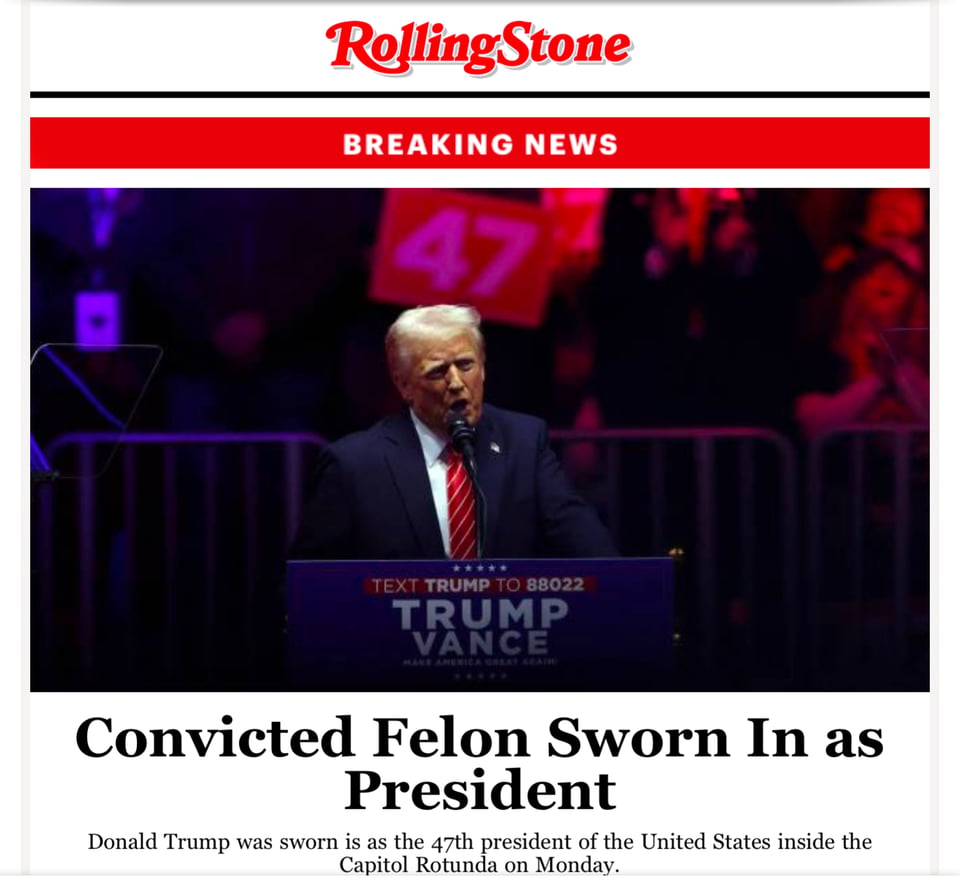
2nd Best headline. January 20, 2025.

Pope Francis calls Trump plan to deport undocumented immigrants a ‘disagrace’.
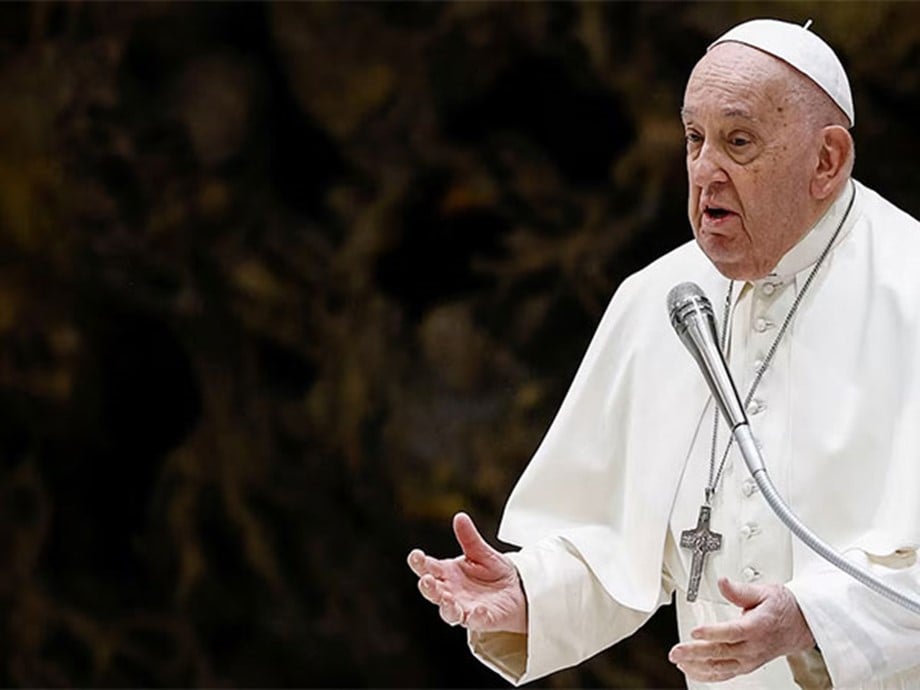
The pope’s comments provided the latest indication of a potential rekindling of frictions between the Vatican and the next Trump White House. (Washington Post).
Maybe if Mayor Bass gives the Grifter Felon what he wants, he will help California recover?
Trump wants to go for the gold. Does LA?
Donald Trump’s longtime support for L.A.'s Olympics aspirations is throwing the city a possible lifeline as congressional Republicans demand conditions on disaster aid for California.
Let’s talk pardons.
President Biden pardoned people to protect them.
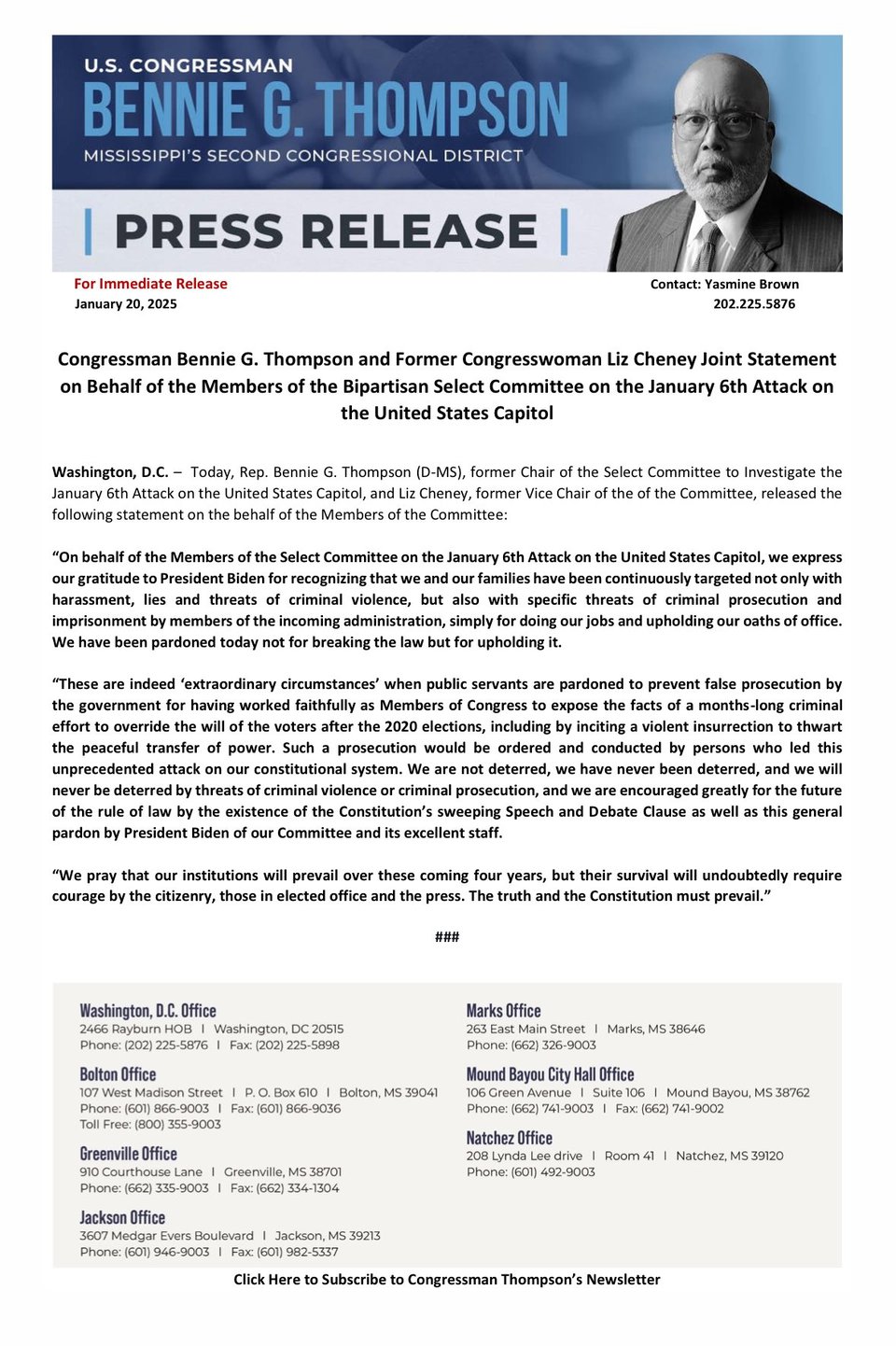
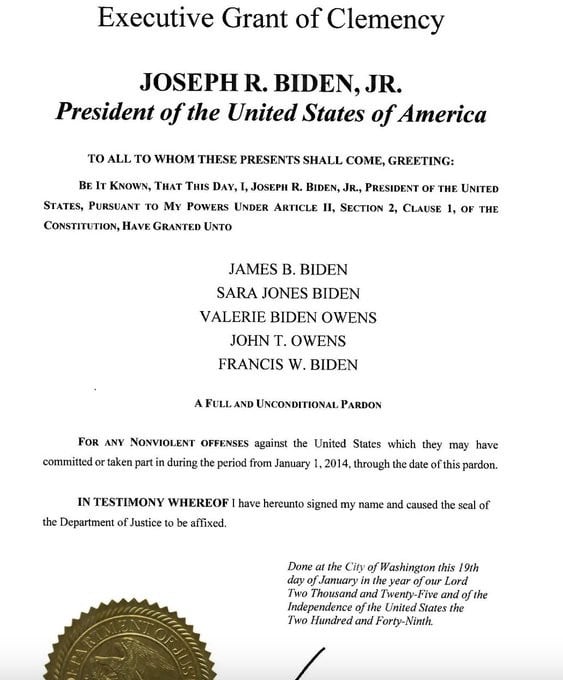
Trump pardoned people to build his army.
He released his brown shirts to roam our streets.

Enrique Tarrio, leader of the Proud Boys, convicted of conspiring to lead what occurred that day at the Capitol, was serving a 22 year prison term, until Trump pardoned him.

Stewart Rhodes, leader of the Oath Keepers, had his prison term commuted by Trump from 18 years to time served.
President Trump on Monday pardoned members of the mob that attacked the Capitol on Jan. 6, 2021, as well as executive orders addressing the first priorities of his administration.
Mr. Trump gave sweeping pardons to nearly all of the 1,600 rioters charged with storming the Capitol and commuted the sentences of several others. His decision appears to cover both people accused of low-level, nonviolent offenses that day and those who committed violence. (New York Times).
Perhaps we all should wear necklaces made of cowrie shells.
The Deeper Meaning Behind Justice Ketanji Brown Jackson’s Collar at the 2025 Inauguration.
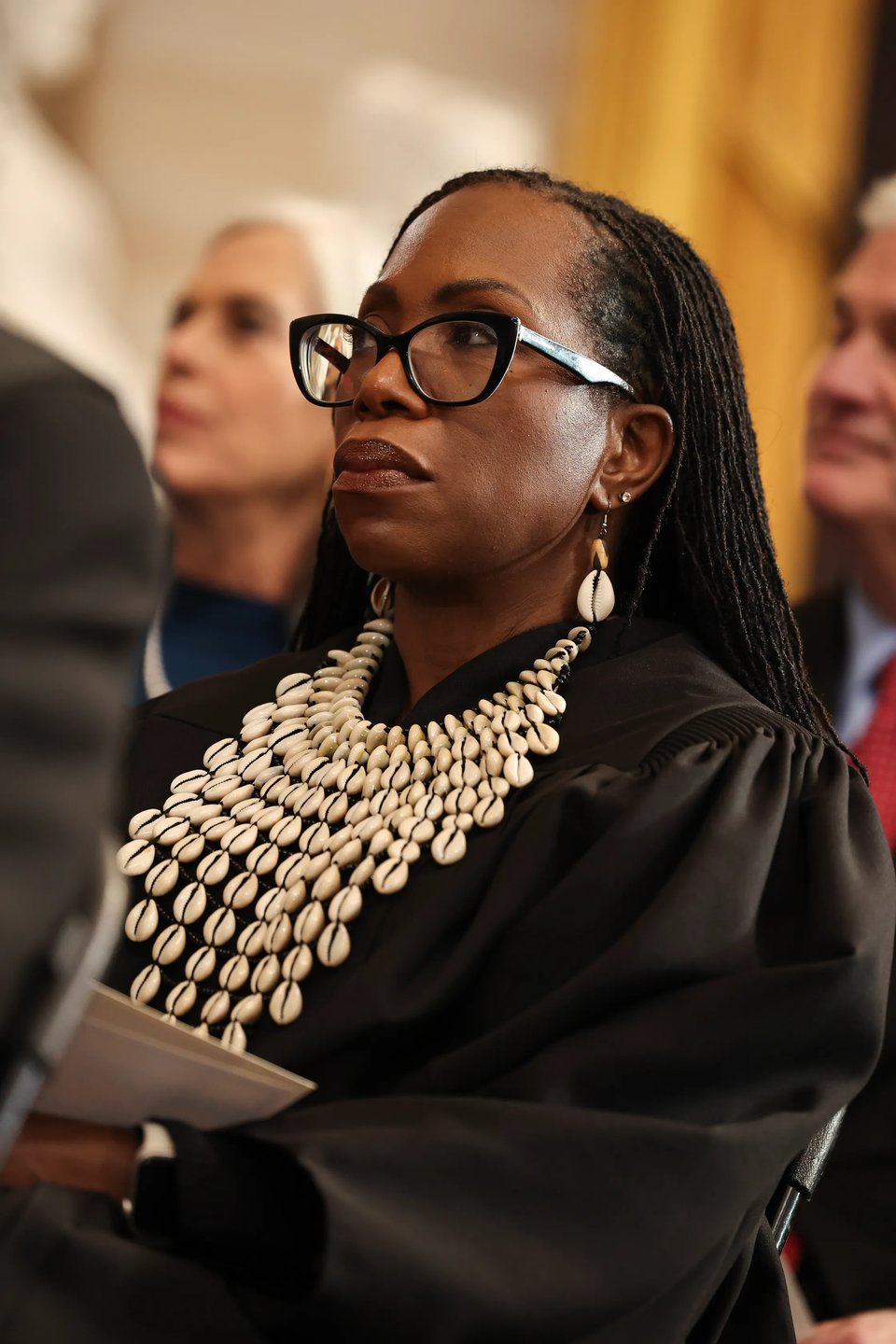
Supreme Court Justice Ketanji Brown Jackson chose a judicial collar loaded with symbolism for the 2025 Inauguration.
Over her black robes, the Justice wore a collar made of cowrie shells along with a pair of matching earrings. While the shell was used as currency in a variety of ancient cultures around the world, it was especially prized in African cultures, where it signified prosperity and protection.
Meanwhile, the National Museum of African American History and Culture notes that, in America, the shell is thought to be a totem used to resist enslavement. Justice Jackson herself is a descendant of enslaved people. The connection feels particularly prescient on Martin Luther King Jr. Day, which happened to coincide with the Inauguration. (Vogue)
Trump on tariffs: "We're thinking in terms of 25 percent on Mexico and Canada ... I think we'll do it February 1."
— Aaron Rupar (@atrupar.com) 2025-01-21T00:53:36.656Z
When you get down, remember. Many will fight back.
Canada's Revenge: Hitting Trump Where It Hurts - His Red State Base.
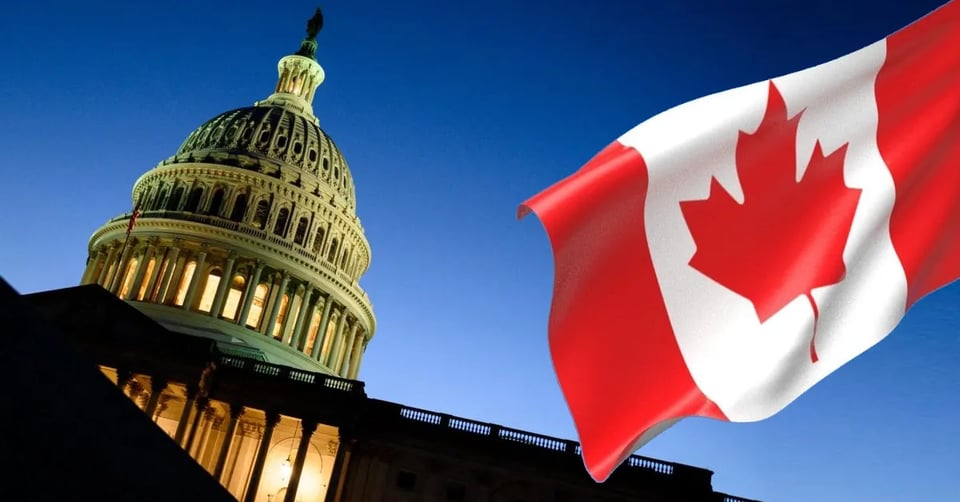
A Smart Plan to Counter Trump’s Bullish Tariffs
How Canada’s Strategic Plan Strikes at the Heart of Trump’s GOP Support Base.
As the United States and Canada teeter on the brink of a trade war, Canada has unveiled a sharp, politically calculated strategy to counter Donald Trump’s threats of tariffs.
By targeting red states and Republican strongholds, Canada’s three-stage plan is designed to apply maximum pressure on Trump’s political allies while protecting its own economy.
This approach represents a deliberate challenge to Trump’s protectionist policies and a masterclass in leveraging political and economic power in the face of a potential trade crisis.
The Looming Trade War and Trump’s Provocation
Trump has threatened to impose a 25% tariff on all Canadian imports to the U.S., reigniting tensions between the two nations and threatening a historically strong trade relationship.
Trump’s aggressive move is not only a deviation from decades of cooperative trade policy but also a direct threat to Canada’s economy.
In response, Canada is preparing a retaliatory strategy that hits Trump and his allies where it hurts the most: their political base in Republican-controlled states.
A potential trade war with Canada underscores the broader risks of Trump’s protectionist agenda, which has targeted allies and partners alike. Canada, however, isn’t backing down.
Instead, it has crafted a response designed not just to defend its economy but to actively undermine Trump’s support within key states that helped elect him.
Canada’s Politically Calculated Three-Stage Plan
At the heart of Canada’s response is a three-stage retaliation plan. Unlike a traditional economic countermeasure, this strategy is political in nature. It targets products and industries in Republican strongholds and escalates pressure over time.
Stage 1: Targeting Red States and Swing States
The first stage of Canada’s plan involves imposing tariffs on U.S. consumer goods worth 37 billion Canadian dollars ($25.6 billion USD).
This initial round of tariffs is designed with surgical precision, hitting products from Republican or swing states, such as Florida’s orange juice, Tennessee’s whiskey, and Kentucky’s peanut butter.
These products were chosen to create political pain for GOP leaders and Trump allies, forcing them to reconsider their support for Trump’s protectionist policies.
By targeting industries in states that are critical to Trump’s electoral coalition, Canada is making it clear that any trade war will carry domestic political costs for the GOP.
The goal is to create pressure not only on Trump but also on Republican governors, senators, and members of Congress who rely on these industries.
Stage 2: Escalating Tariffs
If the situation escalates, Canada plans to expand its tariffs to cover 150 billion Canadian dollars’ worth of U.S. imports.
This stage broadens the scope of affected products, targeting a wider range of goods that impact everyday Americans and red-state economies.
The expanded list is designed to amplify the economic pressure on Trump’s political allies while protecting Canadian industries.
Stage 3: Weaponizing Critical Exports
The final stage in Canada’s plan involves restricting the export of essential resources to the U.S., including hydroelectric power, oil and gas, potash, uranium, and critical minerals.
This stage leverages Canada’s role as a major supplier of resources that many U.S. industries and states depend on.
With 80% of Canada’s oil and 60% of its natural gas exported to the U.S., these restrictions could have devastating effects on states reliant on Canadian energy and resources.
This stage also represents Canada’s most aggressive move, signaling that it is willing to wield its economic power to protect its national interests—especially if it means disrupting critical supply chains in Republican-controlled states.
Canada’s Diplomatic Offensive
Canada’s retaliation isn’t limited to economic measures. Foreign Minister Mélanie Joly has launched a diplomatic campaign targeting key Republican figures, including Senator Lindsey Graham, Senator Jim Risch, and Senate Majority Leader John Thune.
The aim is to emphasize the economic and political risks of Trump’s tariffs while fostering dissent within the GOP.
This diplomatic approach aligns with Canada’s broader liberal values, which prioritize multilateralism and cooperation over conflict.
By directly engaging with U.S. lawmakers, Canada is working to isolate Trump within his own party and build opposition to his protectionist agenda.
The Economic and Political Stakes
The U.S.-Canada trade relationship is deeply intertwined, with nearly $1 trillion in goods exchanged annually.
Any disruption would have far-reaching consequences for both economies, particularly in industries like automotive manufacturing, where supply chains cross the border multiple times during production.
Canada is also the largest supplier of oil to the U.S., underscoring its leverage in this conflict.
The decision to target red states and key Republican allies reflects Canada’s understanding of U.S. domestic politics.
Trump’s protectionist policies may appeal to his base rhetorically, but they risk alienating Republican lawmakers whose states rely on trade with Canada.
By exploiting these political fault lines, Canada is turning Trump’s own tactics against him.
Challenges at Home: Balancing National Unity
While Canada’s strategy is bold, it is not without its challenges. Alberta, a major oil-producing province, has expressed concerns about using oil exports as leverage, fearing negative impacts on its own economy.
This internal resistance highlights the delicate balancing act Canada must perform to maintain national unity while pursuing its retaliatory strategy.
To address these concerns, the Canadian government is preparing support measures for industries and workers affected by the trade dispute.
These measures signal Canada’s commitment to defending its economy while standing firm against Trump’s aggressive policies. (SAMUEL WYNN WARDE, The Art of Living, Substack)
One more thing.
Gov. Ron DeSantis of Florida referred to the Gulf of Mexico as the “Gulf of America” in a state executive order on Monday, even before President Trump had taken any presidential action to rename the body of water.
Mr. Trump said during his inaugural address that one of his first actions in the White House would be to rename the Gulf of Mexico as the Gulf of America, but he had yet to take action on the promise hours into his second term. The pledge during his inaugural speech drew an audible laugh in the Capitol Rotunda from Hillary Clinton, the former secretary of state and two-time Democratic presidential candidate. (New York Times).